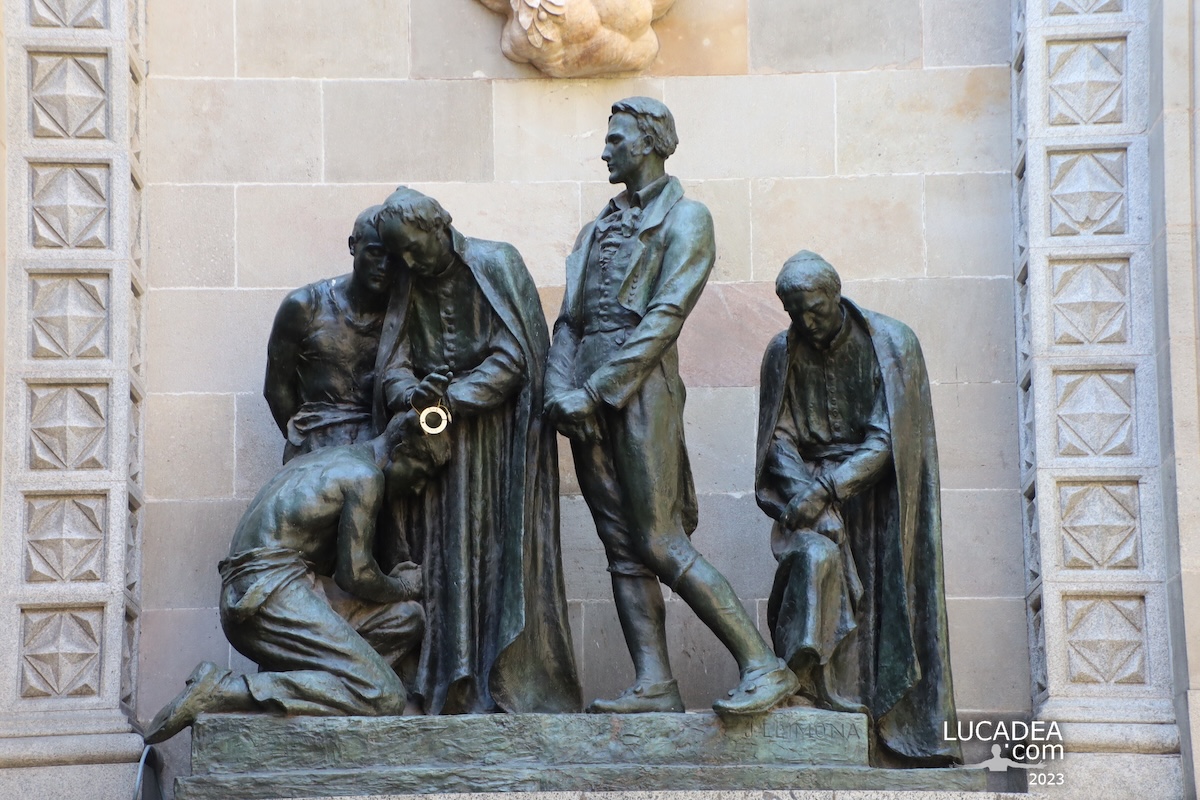Monument to the Heroes of 1809 in Barcelona.
The Monument to the Heroes of 1809, located in Barcelona, is a symbol of resistance and sacrifice. Also known as the Monument to the Martyrs of Independence, it is dedicated to eight people who were executed after a failed attempt to liberate the city from the occupying French troops.
During the Spanish War of Independence (1807-1814), Barcelona was occupied by Napoleon's army and turned into a military stronghold. On May 12, 1809, around 8,000 citizens attempted to overthrow the French troops. The uprising was quickly suppressed and the organizers were captured. On June 2, eighteen conspirators were tried by a military court. Five of them were sentenced to death and executed in front of the Citadel of Barcelona. During the executions, three men rang the bells of the Barcelona Cathedral in an attempt to provoke a second uprising. French soldiers blockaded the cathedral, where the rebels held out for three days before being captured and eventually executed.
The monument, inaugurated in 1929, is located in Plaça Garriga i Bachs, opposite the side entrance to Barcelona Cathedral. It consists of a bronze statue of the five martyrs on a stone pedestal, flanked by tile panels with illustrations of the occupation of Barcelona. The statue was created by Josep Llimona, but was not completed in time for the inauguration. The organization that commissioned the monument decided to go ahead with the inauguration and add the statue later. Completion was delayed by the Spanish Civil War, and Llimona's statue was finally installed in 1941, along with two alabaster angels by Vicenç Navarro.
The Monument to the Heroes of 1809 is a tribute to the sacrifices made for freedom and independence. A plaque at the base of the monument is engraved with the names of the eight martyrs: Father Juan Gallifa, Dr. Joaquim Pou, Juan Massana, Salvador Aulet, Jose Navarro, Pedro Lastortras, Julian Portet and Ramon Mas. The plaque reads: “They sacrificed their lives for God, their country and their king. The grateful city in perpetual memory.”
The monument is located in the heart of the Gothic Quarter of Barcelona, near the Cathedral. The nearest metro stop is Jaume I on the L4 line (yellow line). In addition to the monument, other attractions nearby include the Bishop’s Bridge (El Pont del Bisbe), the Wall of the Kiss (The World Begins in Every Kiss) and the Plaça de Sant Felip Neri.
Have you ever seen this monument in Barcelona?
Add your own comment or go to the bottom of the site to read what other visitors have written.

Photo taken with Canon EOS RP and lens Tamron 16-300.
Where is the monument located:
The Monument to the Heroes of 1809 in Barcelona – Le Monument aux Héros de 1809 à Barcelone – El Monumento a los Héroes de 1809 en Barcelona – O Monumento aos Heróis de 1809 em Barcelona – Das Denkmal für die Helden von 1809 in Barcelona – Đài tưởng niệm các anh hùng năm 1809 ở Barcelona
The text of the post was written with the help of Copilot, a virtual assistant based on artificial intelligence.
References:
– https://barcelonalowdown.com/monument-to-the-heroes-of-1809/
– https://www.tripadvisor.it/Attraction_Review-g187497-d24156326-Reviews-Monument_Als_Herois_Del_1809-Barcelona_Catalonia.html
– https://ca.wikipedia.org/wiki/Monument_als_Herois_del_1809



























